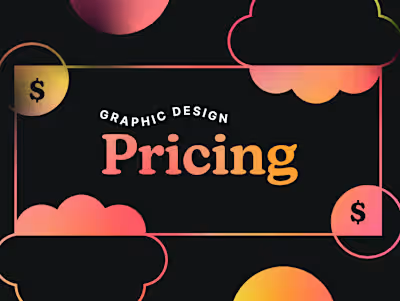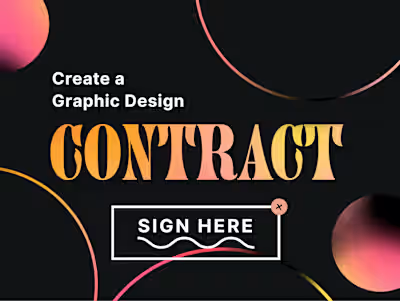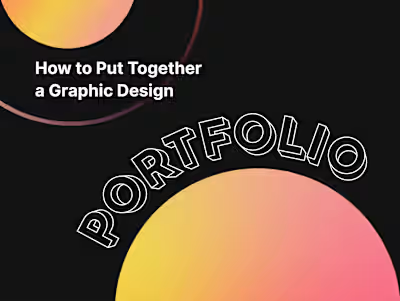How to Promote Your Freelance Graphic Design Business
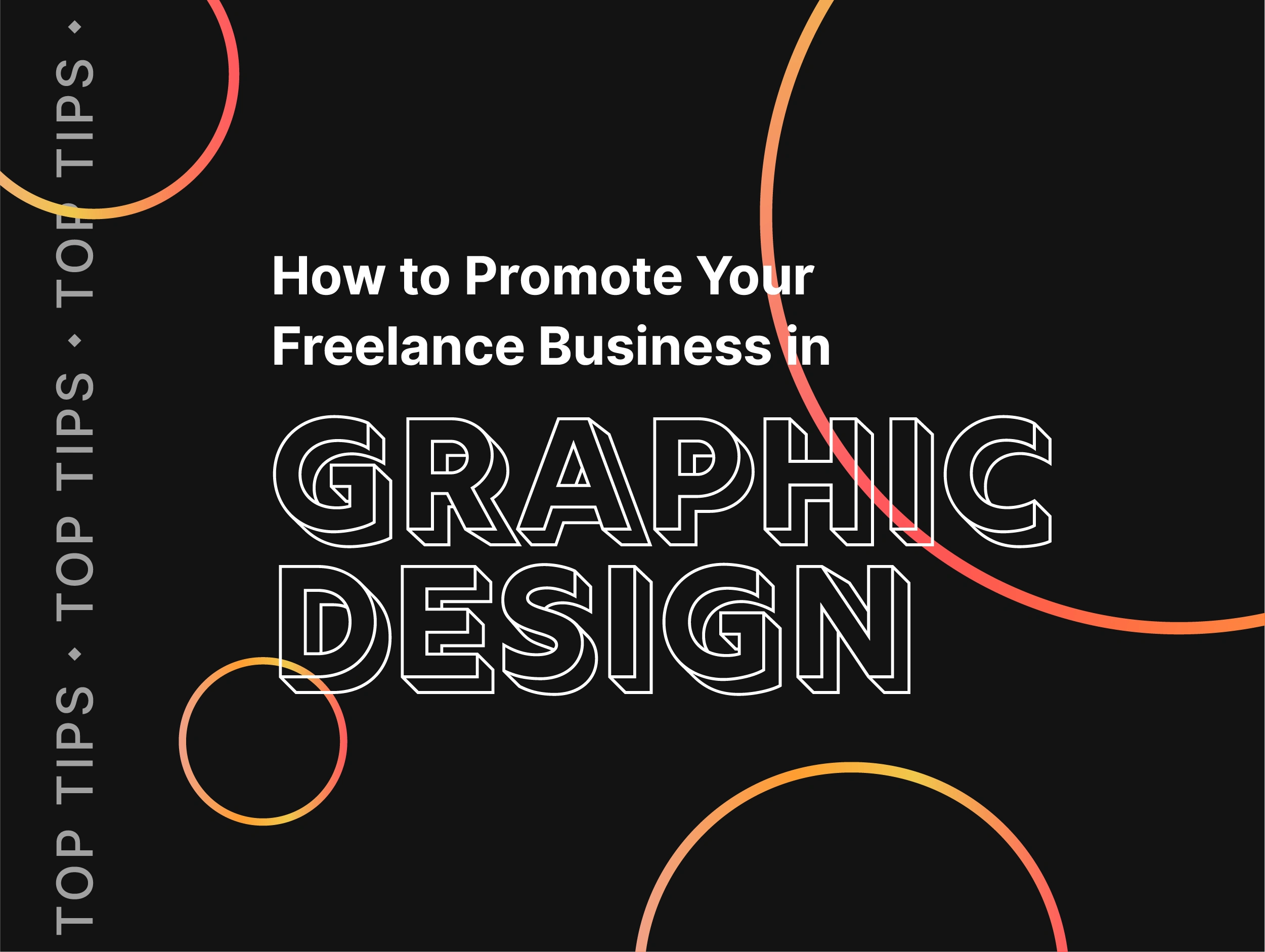
As every freelance designer quickly learns, running a successful business requires more than raw talent. In fact, most of the most successful freelancers I know consider themselves business owners first and creatives second.
Yes, your graphic design skills are the heart of your brand—but they’re not going to help you land clients if no one knows about you, your business, and what you can do for them.
That’s why knowing how to promote your freelance graphic design business is vital to your success. Not sure how to market yourself as a freelance graphic designer? Let’s talk about how you can build a professional online presence, promote your brand, and grow your freelance business.
How to Start Marketing Yourself as a Freelance Graphic Designer
There are a few basic housekeeping needs to take care of before you can market yourself as a freelance graphic designer.
In order to market yourself online, you need to start with a clear understanding of what your business can offer, who your ideal customers are, and your brand identity. From there it’s all about putting your business out there, targeting the right channels, and showcasing your work.
Of course, this is all easier said than done. To help you get started, here’s a sort of “pre-launch” checklist to ensure you’ve got all the necessities in place to promote your design business. (That said, these steps can be tackled or reevaluated at any point in your career!)
Step 1: Define your Niche
You’ve probably heard this advice before, but what does it mean to have a niche as a designer? In most cases, “niching down” is really about positioning. For a freelance graphic designer, this could mean specializing in a particular style, format, industry, or client type.
Not sure how to choose a niche? Start by reflecting on your experience and think about what type of work you want to be doing. One of the many perks of being a freelancer is the ability to pursue projects you are interested in while turning down work that isn’t a great fit.
For example, you might find that you really enjoy and excel at data visualization, or logo and brand development, or that you prefer to work with D2C retail brands or SaaS startups.

How does defining a niche help you promote your freelance design business?
Not only does this allow you to hone your skills in a particular context, but it also makes it easier to market your business. Rather than positioning yourself as a jack-of-all-trades, you’re more likely to impress potential clients if you can show that you’re an expert in the type of design they’re looking for.
Of course, your niche doesn’t have to be one super specific thing that you can never move away from. In some cases, it’s more feasible to work with a few specific types of clients or projects.
Step 2: Create Brand Assets for Yourself
As a freelance designer, you have a powerful marketing tool built right into your business. So, why not take advantage of it by creating a logo and signature style for your business?
Designing assets for your business gives you the opportunity to develop your brand identity, showcase your skills, and present yourself as a true professional. Plus, having branded assets will come in handy for promoting your business across basically any channel—from social media to email marketing to your website and portfolio.
Unfortunately, plenty of freelance designers skip over this step, especially when they’re starting out—but that’s part of why developing your brand can help you get noticed.
Step 3: Ask for Client Testimonials
Social proof is one of the best ways to market just about anything—including your freelance design services. Whether you’re a seasoned pro or new to freelancing, client testimonials can go a long way in building trust and adding authority to your brand.
If you’ve been in the freelancing game for a while already, check in with your past or existing clients to ask for a testimonial. If you're brand new to the freelance design world, you might need to get a bit more creative.
If you previously worked in a full-time role, reach out to your former team lead or creative director. Either way, it pays to ask your connections. Even having one testimonial is better than nothing.
However, if for some reason you don’t have anyone who can provide a testimonial, make that a top priority on your next project to follow-up immediately for a testimonial.
Quick Tip: Struggling to get a response? Simplify your ask. A brief message with a direct ask is more likely to get a response than a long-winded or open-ended email. Remind the client of the project you worked on together and consider providing a pre-written testimonial or template to save them time.
Step 4: Establish your Online Presence
Next, you need to get your business on the right channels. Here’s where you bring together all of your design assets, testimonials, and work examples to create an impressive business presence.
This step includes setting up social media accounts for your business, along with a website, portfolio, and profiles on freelancing platforms.
Anabelle Pang is a freelance designer with years of experience under her belt. One of her biggest pieces of advice for new designers looking to promote their business is to experiment with multiple channels earlier in their career.
“I wish I had tried pushing my own work and process more on social media platforms sooner. And of course, I wish I had joined these talent-focused platforms to have profiles set up to promote my professional & work experience. I guess there’s still plenty of time for me to do that, never too late to start something new!”
Step 5: Elevate your Portfolio
Arguably the most important aspect of promoting your freelance design business is your portfolio. Social media, email marketing, networking, etc. are all great for sparking interest in your design work, but it’s your portfolio and work examples that will seal the deal.
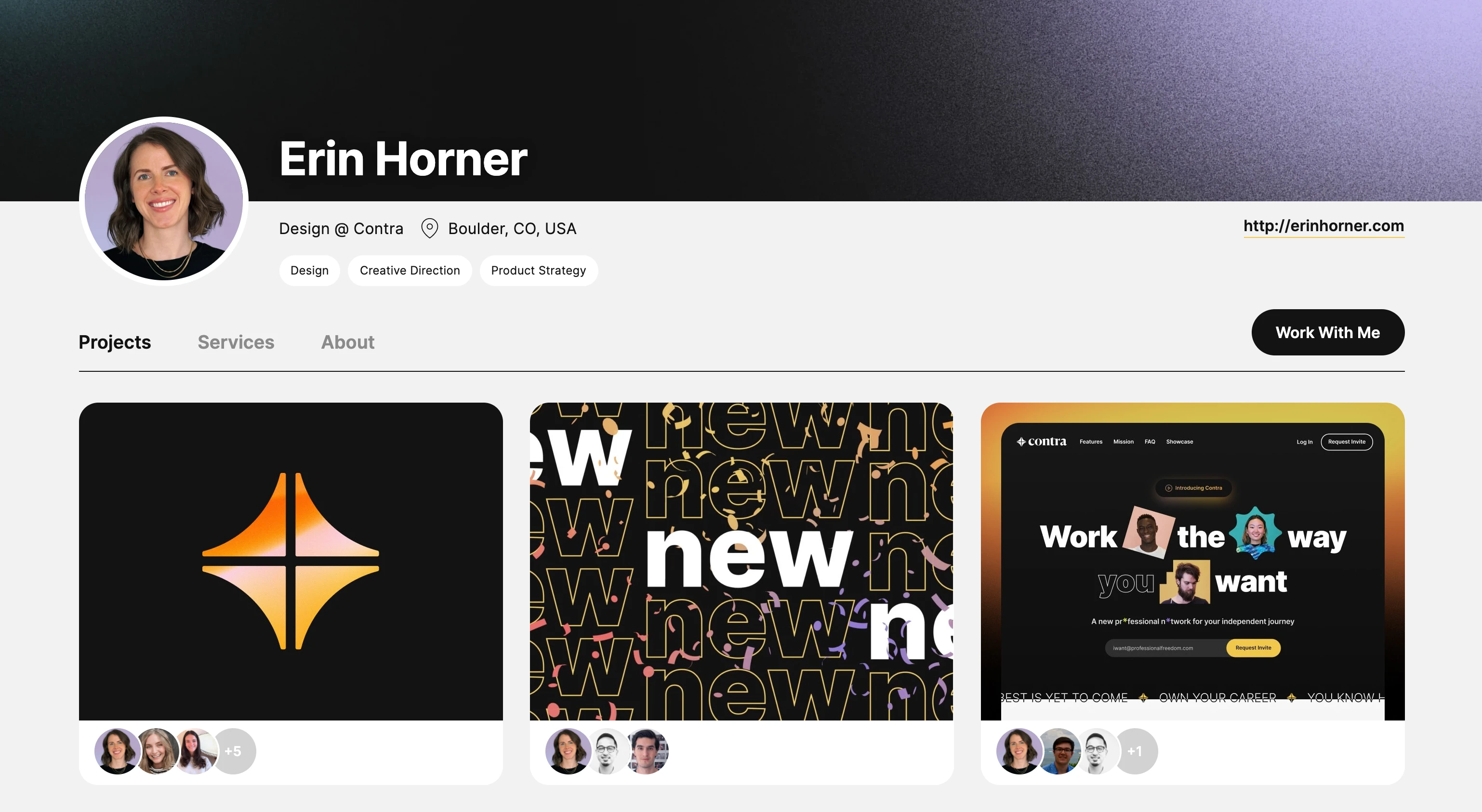
But what if you’re just starting out or have projects bound by an NDA that prevents you from adding them to your portfolio? Or what if you have a healthy portfolio but want to switch lanes a little bit?
Freelance designer Sydney Koffler recommends doing a lot of personal projects that align with the type of work you want to be doing: “It helps you build new skills, showcase what you’re capable of, and attract clients who are looking for a style that you enjoy creating.”
This might be spec work or even concept art you can pitch to future clients.
“Doing our own branding and promotion is the hardest sometimes as a designer,” adds Anabelle. “So, sometimes using an online platform like Contra to build a profile is the best way to showcase our work with ease. It allows us to bring together all the information about our work and experiences in one place. Also, I think an added benefit is to give us more time to continue to design and build our own professional website.”
4 of the Fastest Ways to Find Freelance Graphic Design Clients
Do you need a new client, like, yesterday? If you’ve already built a decent online presence but aren’t seeing results—or if you’re simply looking to book new work ASAP—here are some marketing approaches you can try for quick results:
1. Reach Out to Local Businesses
Giants move slowly, but small businesses don’t. Local business owners with smaller teams are often able to jump into a new project and take more short-term risks than their corporate counterparts.
So, if you’re looking to fill up your short-term workload, do some local research and reach out to local retailers, restaurants, and businesses. But don’t just ask them if they’re looking for design support; come to them with suggestions for a specific project you’d like to help them execute.
2. Offer Free Consultations
Anyone who’s ever done cold outreach knows that getting people to respond is the hardest part. Whether your approach is to email potential clients, message businesses on LinkedIn or Twitter, or reach out to warm leads through a network like Contra, it’s important to offer value from the first interaction.
If you’re looking to speed up the response rate, consider offering free consultations. This gets leads on the phone (or Zoom call) quickly and opens up the conversation. Once you have a chance to speak to them, you’ll have a better sense of how you can help them and what their project timeline looks like—which allows you to identify clients who best fit your schedule.
3. Help Out a Busy Designer
Sure, sometimes freelancing can mean feast or famine—but, generally, there’s more than enough work to go around for talented designers. Oftentimes, the actual problem is poor distribution. So, the next time you find yourself in a design drought, ask around in your network to see if anyone is looking for temporary backup. Chances are there’s another freelance designer out there who is struggling to keep their head above water.
4. Incentivize Clients to Start Projects ASAP
If you’re looking to land new work as fast as possible, consider promoting your business with a limited-time offer for new clients who sign by a specific date. For instance, if you notice a slow period coming up in your calendar, you could update your socials, website, and portfolio to market that window with a 15% discount (and offer quicker-than-average turnaround, while you’re at it!).
Marketing for Future Growth: How to Position Your Freelance Design Business for Long-Term Success
Running a freelance design business doesn’t have to be feast or famine. It is possible to build up a steady base of ongoing, reliable clients—it just takes time and effort to get there.
The key is to think long-term. That means investing in your reputation as a professional and building your brand through these long-term strategies.
Go where your ideal customers hang out
There’s no point in “niching down” if you’re not going to actively seek out that type of client. Whether it’s an in-person event or an industry Facebook group, marketing your design business requires existing in the same spaces as your target audience.
Anabelle Pang recommends a combination of public channels like social media and private channels like Slack to connect with potential clients:
“There are so many outlets available these days! There are all the social media platforms that have formed little communities for everyone. However, it can be quite overwhelming at times. These days what I find using a combination of Slack channel communities and LinkedIn has worked well in self-promotion.”
This is true whether you’re a designer, writer, strategist, developer, or anything else that involves marketing yourself to clients.
Ask for referrals
Simply asking for referrals is one of the easiest, most effective ways to market your freelance design business. Your past and current clients can be a valuable resource for potential new work.
They might already know people who are hiring freelance designers. So, if your best clients are SaaS founders, for example, ask if they know any other SaaS businesses that could use similar work in.
“Past work experiences and maintaining those relationships has definitely helped me in getting new clients and projects. I’m always thankful for personal referrals and they’re one of the best sources of new design work,” says Anabelle.
The main reason this works is that your happiest clients already love you. They want you to succeed so they can continue to hire your services in the future. They also understand the value you provide, so there’s a good chance they’ll know another business owner who can benefit from your skillset.
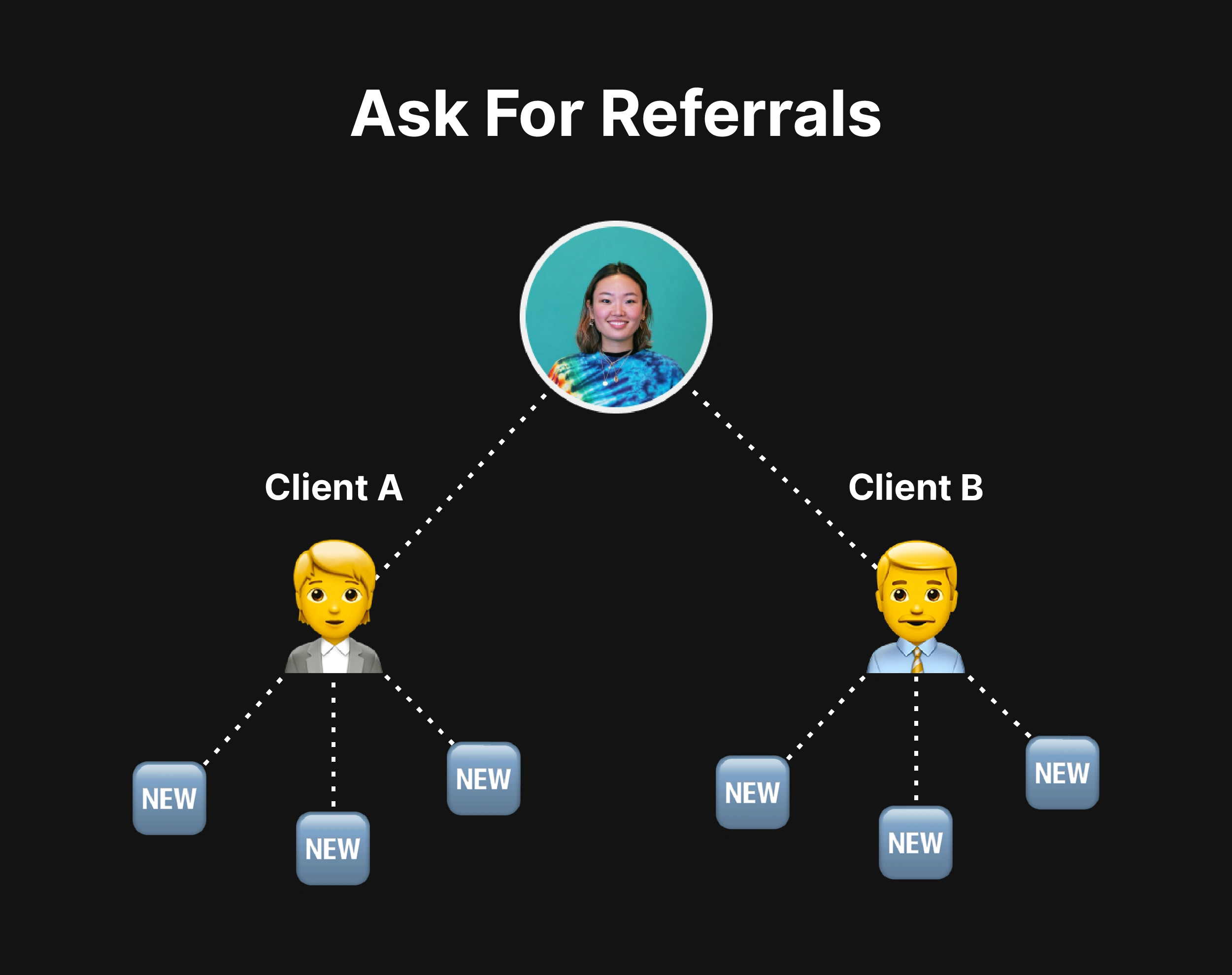
Use calls-to-action and lead capture forms to build a list of prospects
No matter how flashy your website or portfolio might be, it’s only going to generate new business if it asks clients to reach out and tells them exactly how to do so. Basically, wherever clients might discover you, invite them to contact you directly. This could be something as simple as updating your social media bios to say, “DM to discuss your design project,” or, “Message me at [your email] for design inquiries.”
To take things a step further, you can build an email list of prospects through your website. Add a lead capture form to your contact page or a calendar tool that makes it easy for prospects to book a quick call with you.
The goal here is to turn your website and social platforms into lead-generating machines that encourage clients to contact you. This gives you access to a growing list of self-vetted prospects—which could lead to ongoing opportunities in the near future or down the road.
Invest in content marketing and thought leadership
Another way to build your brand as a design pro is to create original thought leadership content. You could start a blog or YouTube channel to share your thoughts on the latest design trends and tools. Or simply make an effort to post more often on social media or relevant groups. This allows potential clients to get to know you and makes it easier for them to contact you when there’s work available.
Keep building your network
As you grow your career, your network will naturally grow with it. Make an effort to follow-up with past clients, stay in touch with contacts when they switch jobs, and be supportive of any other designers you get the chance to work with (whether they’re in-house or freelance).
Rather than thinking of other freelancers as competition, recognize them as your peers. Be kind, be human, and offer help when you can. You might learn a lot from each other. Plus, partnering with other designers allows you to support each other and share the workload when necessary—rather than turning down a loyal client when you’re busy.
You should also keep an eye out for opportunities to collaborate with writers, developers, and other freelancers. Combining your skill sets opens up a whole slew of opportunities to tackle cross-discipline projects together.
What’s Next for Your Freelance Design Business?
Whether you’re a newly minted freelancer or a seasoned pro, there are always opportunities for growth—as long as you’re willing to put yourself out there.
By creating a profile on Contra, you get the benefits of a professional design portfolio with social proof built-in thanks to the option to tag collaborators. It’s a great way to showcase your projects, develop your professional identity, and even connect with new clients.
Looking to take your freelance graphic design business to the next level? Set up your profile today to get started!
Like this project
Posted Mar 30, 2021
Likes
0
Views
189


